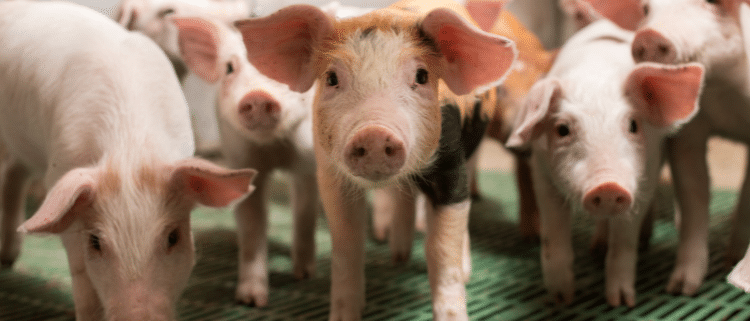Zinc oxide ban in 2022 – now what?
As the zinc oxide ban (June 2022) is literally just around the corner pig producers in the European Union are forced to take a fresh look at feeding and supporting pigs during their most stressful period of their life. History tells us taking a fresh look at things and keeping an open mind, quite often paves the way for much bigger and better things ahead. Maybe that is the attitude to bear in mind as we embark on a new chapter in European pig production.
by Gwendolyn Jones
Zinc oxide ban 2022 in a nutshell
Effective June 2022, the maximum level of zinc permitted in the feed will reduce to 150 ppm in the European Union. As a result, using high level of zinc oxide in the feed will no longer be acceptable. The marketing authorizations for veterinary medicinal products containing high levels of zinc oxide (2000ppm or more) prescribed by veterinarians, which were used to ease the weaning process and manage post-weaning diarrhea will be withdrawn by June 2022.
ZnO can still be used as a feed additive after this date, but only at the maximum permitted dose rate of 150 ppm total dietary zinc. This is still higher than the physiological requirements of weaned piglets. The requirement for Zn supplementation in the diet of weaned piglets decreases from 100 to 60 ppm when their body weight increases from 5 to 50 kg.
The decision to ban pharmacological doses of ZnO for piglets was made because more recent reports demonstrated its contribution to environmental pollution and increase in antimicrobial resistance.
Although to date the EU is imposing the strictest regulations on ZnO in piglet production, other markets are also starting to reduce the levels of ZnO in piglet diets. For example, Canada has already announced its plan to reduce the levels allowed to 3o0ppm and others are likely to follow suit in the future.
What does the zinc oxide ban mean for pork producers?
Post-weaning diarrhea (PWD) due to Escherichia coli is an economically important disease in pig production worldwide, affecting pigs during the first 2 weeks after weaning. It is one of the main reasons why pig farmers are using pharmacological levels of zinc oxide. The biggest issues associated with PWD in piglets are reduced growth rates, followed by increased finishing times and mortality.
Not being able to prevent PWD in piglets could therefore result in significant financial losses to the farmer and reduction of the wellbeing of the pigs.
Weaning is one of the most stressful periods in a pig’s life. Removed from the sow and confronted with dietary changes, having to adapt to a new environment, mixing of pigs from other litters and/or farms can lower the immune response and feed intake and thus make piglets more vulnerable to infectious diseases. The ability to cope with these stressors will also determine the susceptibility of the pig to PWD.
This means that farmers need to take extra care to prepare piglets for weaning and develop multifactorial approaches for a smoother transition if they can no longer rely on the use of pharmacological doses of ZnO post weaning.
How to take the right action for your pigs and stay competitive
Just as being open to new ways of doing things and learning about new things is critical, so is an understanding how we got to where we are now. Talk to your veterinarian and trusted nutritional advisors. Gain different perspectives from outside to plot a strategy for a new path forward. Ideally it should be more holistic, combining optimal nutrition and best practices in biosecurity, management and health programs. This includes optimal management of sows and piglets during the lactation period to optimize resilience in pigs at weaning. There is no silver bullet to replace zinc oxide and each plan should be farm-specific.
Join the Pancosma webinar hosted by Misset to learn about synergistic alternative approaches to pharmacological levels of zinc oxide in piglet diets. If you missed the date of our webinar, you will be able to view a recording of the webinar on demand.



